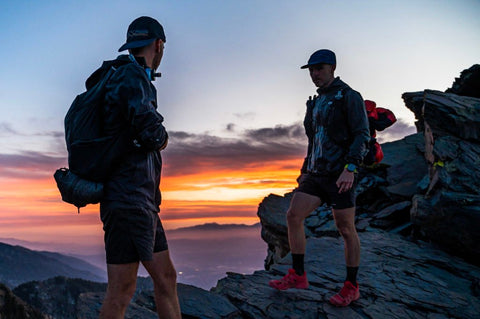Training to Get Outdoors
By: David Ball
Training to get outdoors can seem like a bit of a guessing game. Whether you’re wanting to hike Angels Landing in Zion National Park with your kids, looking to go on your first multi-day backpacking trip or compete in your first trail run race – there seems to be just as many ways to train as things to train for. Here, I’m going to cover some basic principles of training that, no matter what you’re training for, you can incorporate into your plan and improve your odds of not just surviving, but enjoying whatever it is you’re doing.

For training goals, I like to approach it from the perspective of trying to build a car for a specific task, is it something we need to be able to climb mountain pass over mountain pass or something that needs to hug the corners and fly down the straight-away? Based on your answer, you can better inform your training plan on the type of internal engine you need to build.

How to get started? Well, we need to build the engine for the car that you’ll be taking on this trip, so we have to start getting your body ready, we do this through a base fitness phase. While that might sound technical the simple way to think of it is to look at the type of activity your goal will require, tone it down and then do a lot of it. Long moderate hikes, treadmill sessions or easy runs are going to be the majority of this time. You shouldn’t ever be losing your breath while engaging in these workouts. An example of this, if your goal was to do a long and steep hike in a National Park, would be to go and hike for 2-3 hours twice a week on flat or moderately inclined terrain.

Second, to protect yourself, you need to build muscle around the parts of the body that will be repeating the same motions over and over again throughout the course of your activity. Some kind of strength training, whether this is just lunges at home, squats in the gym, or some kind of resistance work will go a long way in preventing injuries and aiding your training. You can think less of trying to bulk up here, and more on forming protective casing around your tendons, nerves, and everything else that ultimately keep you moving so they can hold up to the stress of repeating the same motion over and over again. An example of this type of workout could be 10 air squats at home, repeated four times or placing your toe on the edge of a step and doing 12 calf raises three times.

When training for any given objective, it’s important to think of two things: First, you don’t see Olympic marathon runners training everyday by running a marathon, they break down parts of the race or engage in supplementary workouts to help them at the time of performance. Your training won’t be any different. Second, fitness isn’t built from the top down and there is no replacement for time. If you’re goal is to win a trail race, you’ll still need to engage in that base fitness phase. Just like fast cars can also cruise around all day at mild speeds, you’ll need to be able to do at least some of that if you want to fly down the trail.
For specific training plans or additional thoughts, I recommend checking out Uphillathlete.com
About the Author:David Ball
David considers himself the ambassador of the “Radically Mediocre” lifestyle. He defines this as being able to “hang with people doing just about anything and not slow them down.” You can find him trying to get people to talk to him about the book he just read in coffee shops, or in the western U.S. getting pumped out on scary trad leads (and follows), skydiving, split-boarding and trail running in his home mountain range, the Wasatch, with his dog Margo. Follow him on instagram at @DavidDenverBall.
